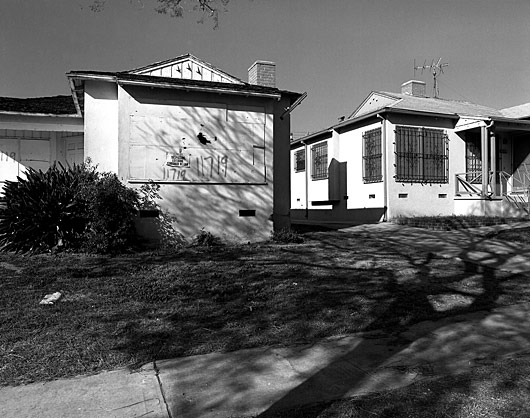In recent months, there have been many stories in the news about California cities facing the threat of bankruptcy. What’s going on? Is Los Angeles in any danger of joining the ranks of Stockton, Mammoth Lakes, and San Bernardino?
Cities go bankrupt for a variety of reasons. Budget deficits are increasingly common at all levels of government but bankruptcy is a last resort. The media is good at reporting cases of corruption and mismanagement which, unfortunately, are sometimes part of the problem. The 2010 scandal in Bell is well-known and commonly-cited. But there are larger forces at work, too, which we hear less about. One exception is a recent op-ed in the Los Angeles Times by Harold Meyerson which points to the economic crisis and the housing bust as major causes of bankruptcy for cities like Stockton and San Bernardino. Cities rely heavily on property tax revenue. For example, last fiscal year 33 percent ($1.4 million) of general fund revenue in Los Angeles came from property tax. When real estate sales and construction drop, that money disappears.
In California, city budget crises are also closely connected to the politics of the state budget. When the state recently eliminated redevelopment to help address its budget deficit, it increased financial hardship on cities by shifting resources from local governments to the state. Cities have little power to fill the revenue gap because Prop 13 has long restricted local government’s ability to raise revenue by requiring cities to win voter approval for taxes.
When a city can’t pay its debts, it can declare bankruptcy for protection from creditors while figuring out a plan of action. Creditors include those owed money for bonds and employees with paychecks and benefits paid from city revenue. (Because revenue trickles in over the course of the year, cities often borrow money through municipal bonds or other financial instruments to help pay the upfront costs of infrastructure projects or general operations.) Chapter 9 of the Federal Bankruptcy Code outlines the rules and procedures for municipalities to reorganize and restructure debt. In many cases, bankruptcy invalidates existing collective bargaining agreements and forces unions to renegotiate vested and other contractual benefits.
Bankruptcy is a last resort with major immediate consequences for a city, including losing access to credit markets and incurring high costs for staff time and legal fees. Long term, bankruptcy has a stigma that can discourage business activity and real estate sales, two important sources of revenue for a city.
Earlier this year, state lawmakers tried to make it more difficult for cities to declare bankruptcy by passing a law (AB 506) that requires cities to first negotiate with creditors in hopes of avoiding bankruptcy. However, as the New York Times pointed out, this new law could unintentionally become a road map for fast-tracking the bankruptcy process due to one huge exception: if cities declare a fiscal emergency and say they are unable to pay bills within 60 days, they can skip talks with creditors and file for bankruptcy. San Bernardino recently did just this.
A city’s governing body, usually a city council, must vote unanimously to declare a fiscal emergency. In the wake of the 2008 economic crisis, the Los Angeles City Council, with the approval of the Mayor, has declared a fiscal emergency each year since 2009. The details can vary but a fiscal emergency generally authorizes a city to do things like reduce work hours, through furloughs or layoffs for example, or renegotiate vendor contracts.
Declaring a fiscal emergency also allows cities to fast-track local revenue measures. Cash-strapped cities such as El Monte and Duarte are the latest to consider this move in order to place revenue measures (a soda tax and sales tax increase, respectively) on the November ballot. Both cities report no plans to file for bankruptcy but the fate of these measures will ultimately impact future financial decisions.
For all these reasons and many more, the City of Los Angeles should step up to identify new revenue solutions now, before bankruptcy is more than a distant threat.












